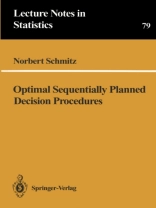Learning from experience, making decisions on the basis of the available information, and proceeding step by step to a desired goal are fundamental behavioural qualities of human beings. Nevertheless, it was not until the early 1940’s that such a statistical theory – namely Sequential Analysis – was created, which allows us to investigate this kind of behaviour in a precise manner. A. Wald’s famous sequential probability ratio test (SPRT; see example (1.8 turned out to have an enormous influence on the development of this theory. On the one hand, Wald’s fundamental monograph "Sequential Analysis" ([Wa]*) is essentially centered around this test. On the other hand, important properties of the SPRT – e.g. Bayes- optimality, minimax-properties, "uniform" optimality with respect to expected sample sizes – gave rise to the development of a general statistical decision theory. As a conse- quence, the SPRT’s played a dominating role in the further development of sequential analysis and, more generally, in theoretical statistics.
Norbert Schmitz
Optimal Sequentially Planned Decision Procedures [PDF ebook]
Optimal Sequentially Planned Decision Procedures [PDF ebook]
Köp den här e-boken och få 1 till GRATIS!
Språk Engelska ● Formatera PDF ● ISBN 9781461227366 ● Utgivare Springer New York ● Publicerad 2012 ● Nedladdningsbara 3 gånger ● Valuta EUR ● ID 4587948 ● Kopieringsskydd Adobe DRM
Kräver en DRM-kapabel e-läsare












